FSX Lavochkin La-9
 Lavochkin La-9 fighter. The Lavochkin La9 was the most powerful of the Lavochkin piston fighters. Development of the Lavochkin La-9 began in 1945. It was a follow-through of the La-7 which was a proven fighter at the time. The La-9 had an all metal construction. The wings were slightly more cu...
Lavochkin La-9 fighter. The Lavochkin La9 was the most powerful of the Lavochkin piston fighters. Development of the Lavochkin La-9 began in 1945. It was a follow-through of the La-7 which was a proven fighter at the time. The La-9 had an all metal construction. The wings were slightly more cu...
- Type
- Complete with Base Model
- Download hits
- 3K
- Compatibility
- Microsoft Flight Simulator X (FSX) including Steam Edition & Prepar3D (P3D)
- Filename
- lavochkin__la-9_fighterfsx.zip
- File size
- 30.35 MB
- Virus Scan
- Scanned 18 days ago (clean)
- Access to file
- Free (Freeware)
- Content Rating
- Everyone
Lavochkin La-9 fighter. The Lavochkin La9 was the most powerful of the Lavochkin piston fighters. Development of the Lavochkin La-9 began in 1945. It was a follow-through of the La-7 which was a proven fighter at the time. The La-9 had an all metal construction. The wings were slightly more cut-off at the tips instead of the more elliptical tips of the previous fighters. The new fighter, entered production in August 1946. A total of 1559 aircraft were built by the end of production in 1948. Aeroplane Heaven freeware upgraded to FSX by A F. Scrub.
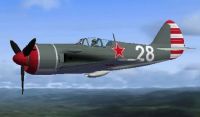
Screenshot of Lavochkin La-9 in flight.
The La-9 was the penultimate development of the line that began with Semyon Lavochkin, Vladimir Gorbunov and Mikhael Gudkov's LaGG-1 in 1938. The three had set up an OKB (experimental design bureau) in Moscow with the intention of creating a general purpose tactical fighter. What would be the LaGG-1 was a fairly orthodox wooden fighter design built around the Klimov M-105P . After being submitted to the Directorate of Aviation Industry (GUAP) it was initially designated the I-22, and went into testing in March 1940. The aircraft was said to lack acceleration and could be out-climbed by the I-16. Redesign saw the weight reduced, a change to the armament and alterations to the wing incorporating automatic slats and allowing more fuel to be carried. The new model was designated the LaGG-3 and went into production in early 1941. The aircraft was described as overweight, underpowered and unforgiving. But it proved its strength of construction in combat and was used for close support and ground attack, with 6,528 being delivered. As WW-II progressed the OKB was relocated to Gor'ky and then Tbilisi but work continued. Experiments were made with the 1540hp Shvetsov M-82 radial. This caused some problems with extra weight and a different thrust line, but flight testing began in March 1942, and production followed in May 1942 as the LaGG-5. After initial teething problems this aircraft went on to be regarded as an impressive low to medium altitude fighter, although it suffered from a light armament, a lack of range, and a tendency to 'bounce' on landing. When the rear deck was cut down the new model became known as the La-5, as Gudkov had left the OKB in mid-1941 and Gorbunov followed in 1942. Further development saw further weight reductions and changes to the fuel setup. A change to the M-82F was designated the La-5F, and in March 1943 to the M-82FN was the La-5FN. Production was in the order of 9,920 aircraft. A parallel development in late 1942 was the La-5UTI which featured a second cockpit aft of the radio bay with separated from the forward cockpit by a greenhouse fairing. It was also distinguished by a larger tail, having the radio mast offset, and a reduction in the armament carried. As metal availability increased in 1943, a mixed construction development incorporating metal spars, further refinements to the fueslage aerodynamics, and maintenance improvements such as better cowling access was introduced. The new version was test flown in November 1943 and went into production the following May as the La-7. A UTI version of the La-7 was also produced, along with the rocket boosted La-7R and a turbocharged high altitude version called the La-7TK. Production amounted to 5,753 by 1946, with the type being removed from frontline service in 1946. It was completely withdrawn by the end of the decade. Like the La-5FN before it, the La-7 was operated by Czech as well as Russian units.
At the end of 1944 development of the composite La-7 was abandoned in favour of an all metal design which would be the La-9. Although the new model showed a distinct family resemblance to the earlier aircraft, it was a completely new aircraft which only shared the powerplant with its predecessor. With an all metal monocoque fuselage and square cut laminar wings, it differed externally with a deeper rear fuselage and larger tail. The redesign was again lighter and gains had been made in fuel capacity . Armament was increased from 2-3 NS-23 23mm cannon to 4 mounted in the nose. One feature carried over was the ducting of exhaust gas through a fuselage filter then pumping it into the wings to force out fuel vapour. The La-9 went into production in 1946 with testing beginning in June and finishing in October. From 1946 the La-9 was quickly seen in the USSR and East Germany and acquired the NATO reporting name 'Fritz'. Production amounted to 1,630 units. A UTI version rapidly followed. Examples were also operated by Chinese and North Korean units. Although the age of the piston fighter was in decline at the outbreak of the Korean War, the La-9 served in combat had had some notable successes. Like opposing piston aircraft, many were turned to ground attack and on June 17, 1953 La-9s participating in a 'Bed Check Charlie' raid on Inchon harbour succeeded in destroying fuel tanks containing some five million gallons of fuel. The La-9 was generally withdrawn from the various communist airforces by 1960. By early 1947 a longer range successor for the La-9, to be known as the La-11 was underway. This sacrificed one of the cannon armament and increased range with an increase from the La-9s 825 litres to 1,100 litres of fuel. It is distinguished by the moving of the underside intake to the cowling lip. The type also served in Korea, and some examples continued in use well into the 1960's.
Installation:
-Unzip "La-9" into a temporary file and move the "La-9" folder into the main Aircraft directory.
-Read instructions carefully when installing the gauges, say YES...when asked if the gauges sources should be trusted. If you say no....some of the gauges are not going to work !
-Leave the kingair.gau, Kingair_radio.gau, Wep.gau and LavochkinGauges.cab.in your panel folder. (It cannot harm if you put them into the gauges folder, let them overwrite earlier ones).
-Copy the effects into the Microsoft GamesFlight Simulator ....effects folder and the 20can.wave in the Microsoft GamesFlight Simulator ...sound folder.
ATTENTION :
-For FS2004, change the FS9_Wing_Guns.fx into FX_Wing_Guns
-For FSX change the FSX_Wing_Guns.fx into FX_Wing_Guns
-The blurred prop has some reflections. If you don't like this, try finding another bmp or just remove the AH_propblur.bmp from the texture files.
Effects:
-On startup there is automatic engine smoke.
-Then follow the exhaust flames with smoke.
-Wing vortex effect appears by default at 2.5g or quick roll rate.
-Continuous blue flames with smoke if engine is running .
-Wing cannon with flash, smoke and falling cartridges can be triggered with the standard Strobe key (O). Remember this key is aliased to the lights key.
It is much nicer however if you put the FS2004 standard Strobe key (O) to the trigger from your joystick. You can change this in the Key menu.
It is a good idea if you replace the standard (L) key for lights by the L+CTRL, (normally activating the landing lights only). This avoids you having to have all lights on when pulling the trigger.
Flying the model:
This plane is a powerful and precise flying machine. It is sensitive to torque and trim settings and prone to nose over when applying brakes and full power.
-CTRL+E opens the canopy
TAKE-OFF :if you have manual rudder enabled, be ready to apply rudder and brake when you hit the throttle !
Better apply throttle proportionally and slowly at first.
1. Parking brake on, start engine, 1/4 flaps,don't use full power when on the brakes
2. Disengage parking brake
3. Hold enough RIGHT rudder, brake to keep the aircraft straight.
4. Take off at about 85 Knots, wheels and flaps up at 110 Knots.
5. To fire guns activate O-key or trigger.
6. Approach at 25% flaps, wheels down at 120 Knots.
7. Touchdown at 80-85 Knots.
Credits:
- Thanks to Aeroplane heaven for a magnificent freeware.
This project is released as freeware. You may modify it and repaint it. You may upload this file to another website as long as it is not for profit. You need the written permission of the original authors to use any of these files for commercial purposes, otherwise a simple credit would be nice. This file should not cause any problems with your computer, but I accept no responsibility if you think it does.
Happy Landings!!
A.F.Scrub

Screenshot of a green and white Lavochkin La-9 in the air.
The archive lavochkin__la-9_fighterfsx.zip has 128 files and directories contained within it.
File Contents
This list displays the first 500 files in the package. If the package has more, you will need to download it to view them.
| Filename/Directory | File Date | File Size |
|---|---|---|
| AH_Lav_9.aam1.air | 10.13.03 | 11.43 kB |
| AH_Lav_9.air | 12.14.11 | 11.89 kB |
| Aircraft.cfg | 12.14.11 | 11.13 kB |
| Aircraft.cfg.txt | 12.14.11 | 10.74 kB |
| effects | 12.15.11 | 0 B |
| 20can.wav | 07.25.00 | 307.08 kB |
| FS9_Wing_Guns.fx | 11.18.07 | 10.43 kB |
| FSX_Wing_Guns.fx | 11.16.07 | 10.48 kB |
| fx_engstrt_jenny.fx | 05.12.06 | 11.98 kB |
| fx_V12_Exhaust.fx | 01.18.05 | 1.24 kB |
| fx_V6_MAX_port.fx | 10.28.07 | 2.36 kB |
| fx_V6_MAX_starb.fx | 10.28.07 | 2.36 kB |
| fx_Wing_Guns.fx | 12.26.06 | 10.48 kB |
| La-9.diz | 12.14.11 | 560 B |
| La-9.jpg | 12.15.11 | 310.83 kB |
| La-9.txt | 12.15.11 | 7.82 kB |
| Lav-9_check.htm | 04.05.04 | 36.54 kB |
| model | 12.15.11 | 0 B |
| LA-9fsx.mdl | 12.14.11 | 1.95 MB |
| Model.cfg | 12.14.11 | 24 B |
| PANEL | 12.14.11 | 0 B |
| $AH_LAV9_L1.bmp | 12.08.03 | 768.05 kB |
| $AH_LAV9_L2.bmp | 12.08.03 | 768.05 kB |
| $AH_LAV9_R1.bmp | 12.08.03 | 768.05 kB |
| $AH_LAV9_R2.bmp | 12.08.03 | 768.05 kB |
| AH_La9.bmp | 03.29.04 | 3.07 MB |
| AH_La9short.bmp | 03.29.04 | 3.07 MB |
| kingair.gau | 06.13.03 | 2.47 MB |
| Kingair_Radio.gau | 06.13.03 | 456.00 kB |
| LavochkinGauges.cab | 12.14.11 | 541.19 kB |
| panel.cfg | 12.14.11 | 5.15 kB |
| Thrust.BMP | 02.24.02 | 14.97 kB |
| VCback.bmp | 09.14.02 | 768.05 kB |
| WEP.gau | 07.16.05 | 84.00 kB |
| panel.jpg | 12.15.11 | 279.30 kB |
| sound | 12.14.11 | 0 B |
| CE1A.wav | 02.20.02 | 90.89 kB |
| CESHUTB.WAV | 02.20.02 | 66.55 kB |
| CESTRTA.WAV | 02.20.02 | 40.31 kB |
| CESTRTB.wav | 01.29.03 | 327.03 kB |
| CESTRTC.WAV | 02.20.02 | 100.31 kB |
| costarta.wav | 08.17.00 | 101.19 kB |
| enginestart.wav | 08.28.02 | 97.75 kB |
| prop1a.WAV | 02.20.02 | 24.42 kB |
| prop2a.WAV | 02.20.02 | 33.98 kB |
| RPM1.wav | 07.01.98 | 86.73 kB |
| RPM2.wav | 12.02.98 | 134.42 kB |
| RPM3.wav | 12.02.98 | 162.64 kB |
| RPM4.wav | 12.02.98 | 62.38 kB |
| RPM4b.wav | 07.01.98 | 27.18 kB |
| Sound.cfg | 12.14.11 | 4.91 kB |
| XCESHUTB.WAV | 02.20.02 | 64.98 kB |
| XCESTRTA.WAV | 02.20.02 | 29.48 kB |
| XCESTRTB.wav | 01.29.03 | 327.03 kB |
| XCESTRTC.WAV | 02.20.02 | 49.81 kB |
| xRPM1.WAV | 05.24.99 | 182.04 kB |
| xRPM2.WAV | 05.24.99 | 180.52 kB |
| xRPM3.wav | 03.17.98 | 162.65 kB |
| xRPM4.wav | 03.17.98 | 162.65 kB |
| xRPM4b.wav | 12.02.98 | 62.38 kB |
| texture | 12.14.11 | 0 B |
| ah_lacan_t.bmp | 03.29.04 | 1.33 MB |
| AH_laext_t.bmp | 04.02.04 | 4.00 MB |
| AH_lafuse2_t.bmp | 03.19.04 | 4.00 MB |
| AH_lafuse_t.bmp | 04.06.04 | 4.00 MB |
| AH_lavc1_t.bmp | 04.01.04 | 1.00 MB |
| AH_lavc2_t.bmp | 02.18.04 | 4.00 MB |
| AH_lavc3_t.bmp | 03.28.04 | 5.33 MB |
| AH_lavc4_t.bmp | 03.24.04 | 5.33 MB |
| ah_lavc5_t.bmp | 03.29.04 | 5.33 MB |
| ah_lawhe_t.bmp | 12.14.11 | 1.33 MB |
| AH_lawin_t.bmp | 03.19.04 | 4.00 MB |
| AH_propblur.bmp | 12.14.11 | 341.43 kB |
| ah_vodka_t.bmp | 12.14.11 | 1.33 MB |
| pilot.bmp | 12.08.03 | 1.33 MB |
| thumbnail.jpg | 12.14.11 | 64.01 kB |
| tstAH_propblur.bmp | 12.14.11 | 1.33 MB |
| texture.1 | 12.15.11 | 0 B |
| ah_lacan_t.bmp | 03.29.04 | 1.33 MB |
| AH_laext_t.bmp | 04.01.04 | 4.00 MB |
| AH_lafuse2_t.bmp | 04.01.04 | 4.00 MB |
| AH_lafuse_t.bmp | 04.01.04 | 4.00 MB |
| AH_lavc1_t.bmp | 04.01.04 | 1.00 MB |
| AH_lavc2_t.bmp | 02.18.04 | 4.00 MB |
| AH_lavc3_t.bmp | 03.28.04 | 5.33 MB |
| AH_lavc4_t.bmp | 03.24.04 | 5.33 MB |
| ah_lavc5_t.bmp | 03.29.04 | 5.33 MB |
| ah_lawhe_t.bmp | 12.14.11 | 1.33 MB |
| AH_lawin_t.bmp | 04.01.04 | 4.00 MB |
| AH_propblur.bmp | 12.14.11 | 341.43 kB |
| ah_vodka_t.bmp | 12.14.11 | 1.33 MB |
| pilot.bmp | 03.30.04 | 1.33 MB |
| thumbnail.jpg | 12.14.11 | 69.47 kB |
| texture.2 | 12.14.11 | 0 B |
| ah_lacan_t.bmp | 03.29.04 | 1.33 MB |
| AH_laext_t.bmp | 04.01.04 | 4.00 MB |
| AH_lafuse2_t.bmp | 04.01.04 | 4.00 MB |
| AH_lafuse_t.bmp | 04.01.04 | 4.00 MB |
| AH_lavc1_t.bmp | 04.01.04 | 1.00 MB |
| AH_lavc2_t.bmp | 02.18.04 | 4.00 MB |
| AH_lavc3_t.bmp | 03.28.04 | 5.33 MB |
| AH_lavc4_t.bmp | 03.24.04 | 5.33 MB |
| ah_lavc5_t.bmp | 03.29.04 | 5.33 MB |
| ah_lawhe_t.bmp | 12.14.11 | 1.33 MB |
| AH_lawin_t.bmp | 04.01.04 | 4.00 MB |
| AH_propblur.bmp | 12.14.11 | 341.43 kB |
| ah_vodka_t.bmp | 12.14.11 | 1.33 MB |
| pilot.bmp | 03.30.04 | 1.33 MB |
| thumbnail.jpg | 12.14.11 | 74.32 kB |
| texture.3 | 12.14.11 | 0 B |
| ah_lacan_t.bmp | 03.29.04 | 1.33 MB |
| AH_laext_t.bmp | 04.01.04 | 4.00 MB |
| AH_lafuse2_t.bmp | 04.01.04 | 4.00 MB |
| AH_lafuse_t.bmp | 04.01.04 | 4.00 MB |
| AH_lavc1_t.bmp | 04.01.04 | 1.00 MB |
| AH_lavc2_t.bmp | 02.18.04 | 4.00 MB |
| AH_lavc3_t.bmp | 03.28.04 | 5.33 MB |
| AH_lavc4_t.bmp | 03.24.04 | 5.33 MB |
| ah_lavc5_t.bmp | 03.29.04 | 5.33 MB |
| ah_lawhe_t.bmp | 12.14.11 | 1.33 MB |
| AH_lawin_t.bmp | 04.01.04 | 4.00 MB |
| AH_propblur.bmp | 12.14.11 | 341.43 kB |
| ah_vodka_t.bmp | 12.14.11 | 1.33 MB |
| pilot.bmp | 03.30.04 | 1.33 MB |
| thumbnail.jpg | 12.14.11 | 67.23 kB |
| La-9 | 12.15.11 | 0 B |
| flyawaysimulation.txt | 10.29.13 | 959 B |
| Go to Fly Away Simulation.url | 01.22.16 | 52 B |
Installation Instructions
Most of the freeware add-on aircraft and scenery packages in our file library come with easy installation instructions which you can read above in the file description. For further installation help, please see our Flight School for our full range of tutorials or view the README file contained within the download. If in doubt, you may also ask a question or view existing answers in our dedicated Q&A forum.
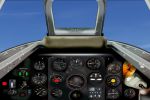
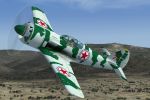

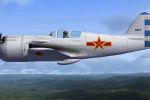
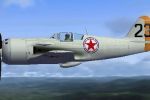
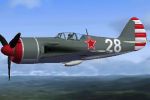
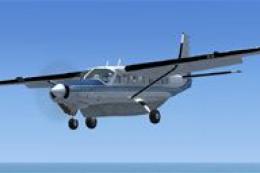
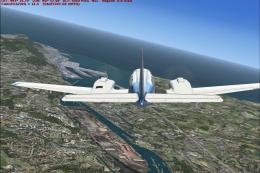
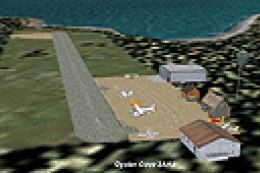
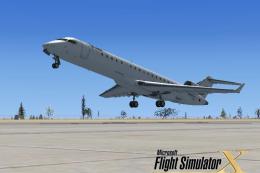
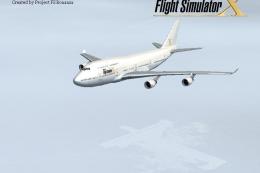
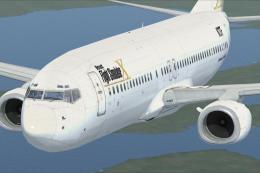

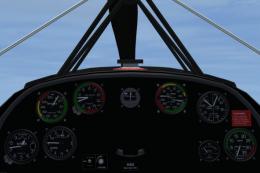

1 comments
Leave a ResponseThe content of the comments below are entirely the opinions of the individual posting the comment and do not always reflect the views of Fly Away Simulation. We moderate all comments manually before they are approved.
This is one of the best WWII fighters I've flown, with the exception of a LA-7r. Real nice.